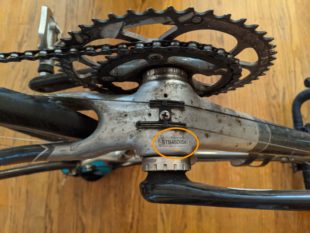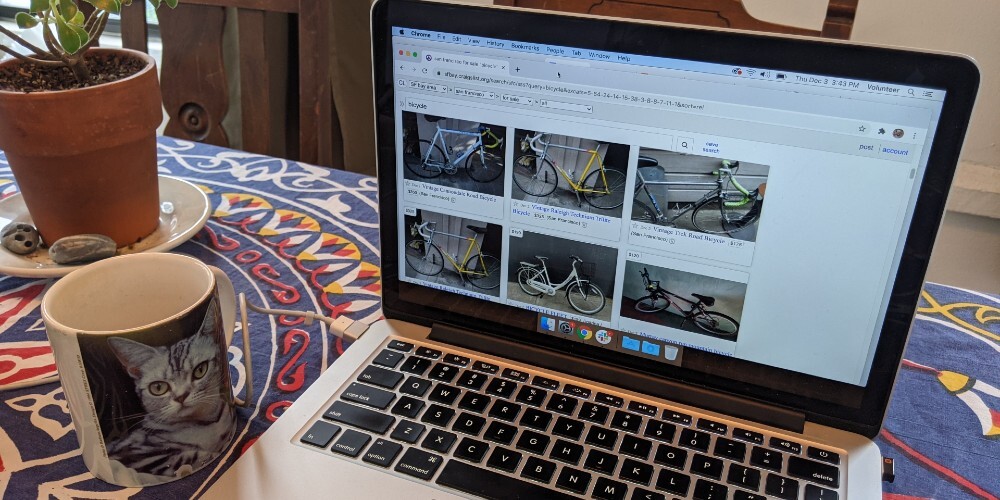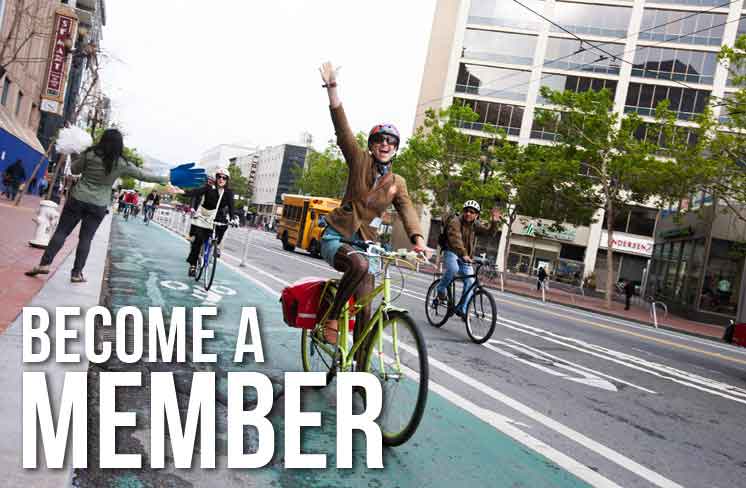The COVID pandemic has sparked an unexpected problem: demand for bicycles has skyrocketed, while manufacturing supply chains have slowed to a crawl, creating an international bicycle shortage. Industry insiders predict that the shortage won’t ease until well into 2021 or even later. As it’s become harder and harder to buy a new bicycle, many people hoping to replace Muni rides with bike travel have grown frustrated, turning to Craigslist and eBay to buy a used bike.
Because bicycles can ride smoothly and safely for decades, buying used is an affordable and sustainable option. However, if buyers aren’t careful, they could unintentionally buy a bike that has been stolen. Doing so supports and incentivizes the stolen bike market, encouraging more thefts and making everyone’s bikes less safe. On the other hand, well-informed buyers who avoid stolen bikes can make bike theft less lucrative and more onerous.
So how can you avoid buying a stolen bike? You just need to be prepared to do a bit of research at the start and to ask a lot of questions.
Reviewing bike ads
As you start to look through used bike ads, compare prices of bikes similar to what you’re looking for, so that you understand the range of prices that are reasonable. This will allow you to recognize if a bike is being offered far below the market price for that bike. Stolen bikes are often sold cheaply in order to unload them quickly, and an asking price far below the market range should raise a red flag.
Other aspects of ads can help you identify suspect bikes. Stock photos copied from manufacturer websites are a bad sign — look for photos of the actual bike for sale. Be wary of ads that offer few details, or that misidentify or misspell the make or model of the bike; the seller may be trying to make it harder for the rightful owner to search for their bike. People who steal many bikes will often have a very similar structure to each of their ads (e.g. listing a few bullet points with similar info in the same order) — as you look at ads, try to recognize those patterns and avoid ads that fit them.
So what should you look for? If you were selling your beloved bike, you’d likely be thoughtful about describing it well and in detail; you may also share some information about your relationship with the bike. Look for ads that provide some context or personal history for the bike, such as how long the owner has had it or why they are choosing to sell it.
Communicating with the seller
If you have identified a bike that you’re interested in, and the ad itself doesn’t raise any alarm bells, go ahead and reach out to the seller — but continue to do your due diligence! Be prepared to ask a lot of questions, and don’t worry about asking the seller to be thorough. Reluctance to answer questions should be seen as a bad sign.
First, is the seller willing to provide some information about themselves? Naturally, people are often reluctant to provide identifying information about themselves, but at the very least a first name and phone number are reasonable to request. You can be direct and explain that asking for these details is part of your effort to make sure you’re buying from the actual owner.
Most importantly, ask for the serial number of the bike, which is a unique identifier and is often used by owners to register their bikes and to prove their ownership. (The SF Bicycle Coalition successfully lobbied Craigslist to add a serial number field on their used bike ad form, but in our experience few sellers actually use it.) A person who has stolen a bike may be reluctant to give this information, since it could prove that they are in possession of stolen goods. You may need to help the seller find the serial number, which is usually stamped directly on the underside of the frame beneath the bottom bracket, where the pedal cranks attach.

The serial number of this bike, like most, is under the bottom bracket next to the pedals.
Also ask specific questions about the bike itself and their experience with it. Try to get the seller to be as specific and detailed in their answers as possible. Useful questions include:
- How long have you had the bike?
- What have you primarily used it for?
- What do you love about this bike?
- Why are you selling it?
- Have you replaced any components? Please provide details.
- Has the bike experienced any crashes or damage you should know about?
Take notes on what the seller tells you. If the seller is reluctant to provide detailed information or becomes particularly annoyed at the questions, we recommend looking elsewhere.
Meeting up in person
Finally, if your virtual exchanges have given you reasonable confidence, meet up in person to see the bike and confirm what you’ve been told. Consider meeting in a well-trafficked and lit public space, or else bring a friend with you for your own safety. When you meet the seller, check what they’ve told you against what you see on the bike; you can also ask the seller the same questions again and make sure the answers are consistent. If the bike is particularly high-end or has specialized components, ask additional questions about those details — someone who has gone to that expense and trouble likely should know a thing or two about what they’ve invested in.
While it’s important to stay vigilant to inconsistent information or deflected questions, be thoughtful about simply “trusting your gut”. Those of us who carry various forms of privilege should be aware that unconscious bias is an ever-present challenge; markers of identity difference could trigger a vague wariness that could lead to inappropriate mistrust. You should only buy a used bike when you feel comfortable doing so, but be inquisitive with yourself about where discomfort might be arising from.
When you’re inspecting the bike, check that the serial number matches what you’ve been told. Also look for large scratches or gouges on the seat tube (the frame tube leading up to the seat) or the down tube (the one nearest the front tire); these could be signs that tools have been used to cut a lock connected there. And if the seller has provided info about any of the components, check that the information matches what you see.
If anything is inconsistent, or if you have a reasonable suspicion that the seller isn’t being honest, be prepared to walk away. But if everything checks out, go ahead and purchase the bike. As a final detail, ask the seller to fill out a bicycle bill of sale form, which you should print out and bring with you (many options can be found by Googling “bicycle bill of sale”; use one that includes a space to write the serial number). Hopefully the seller is honest, and you’ll be riding off on a new pair of wheels.
For other tips on preventing bike theft, check out these tips on locking your bike, and find out about locking your bike up at home.


